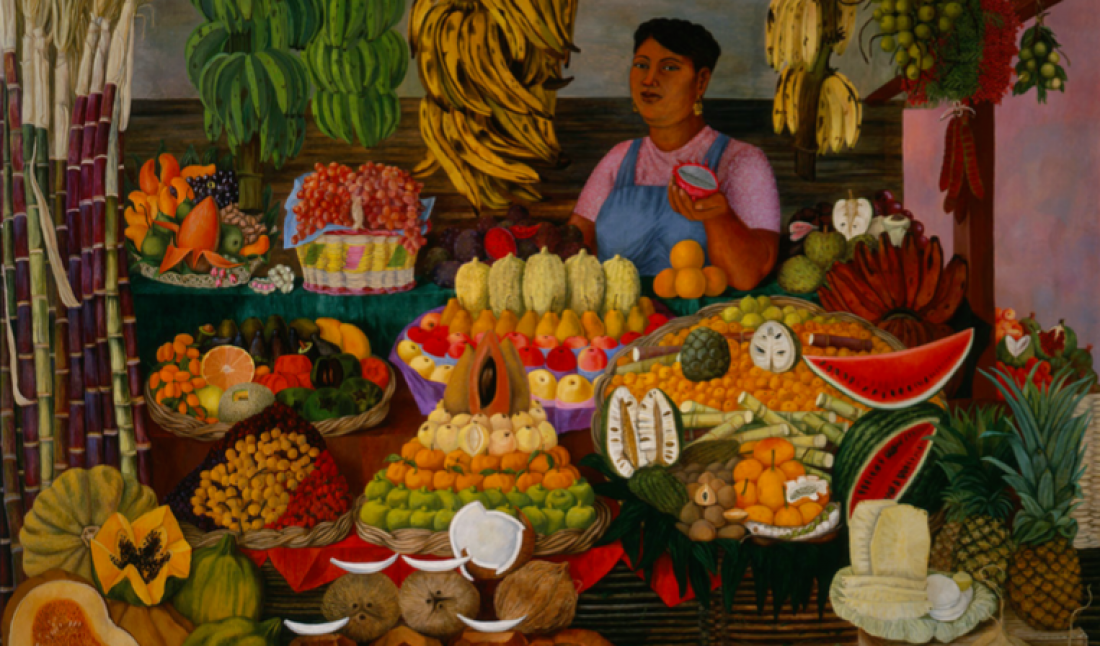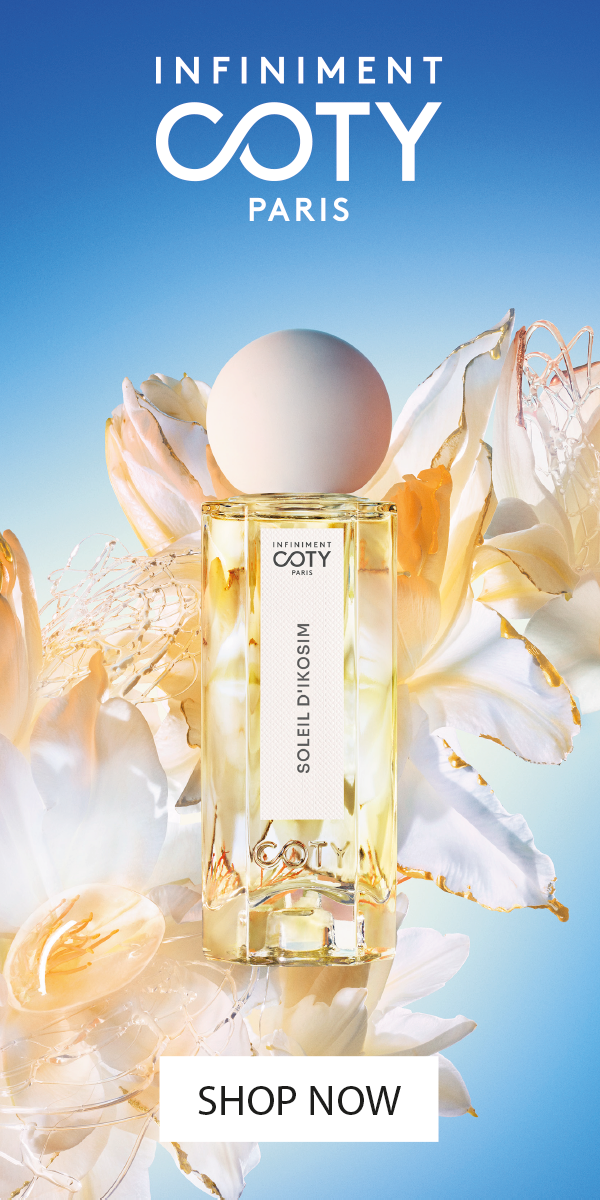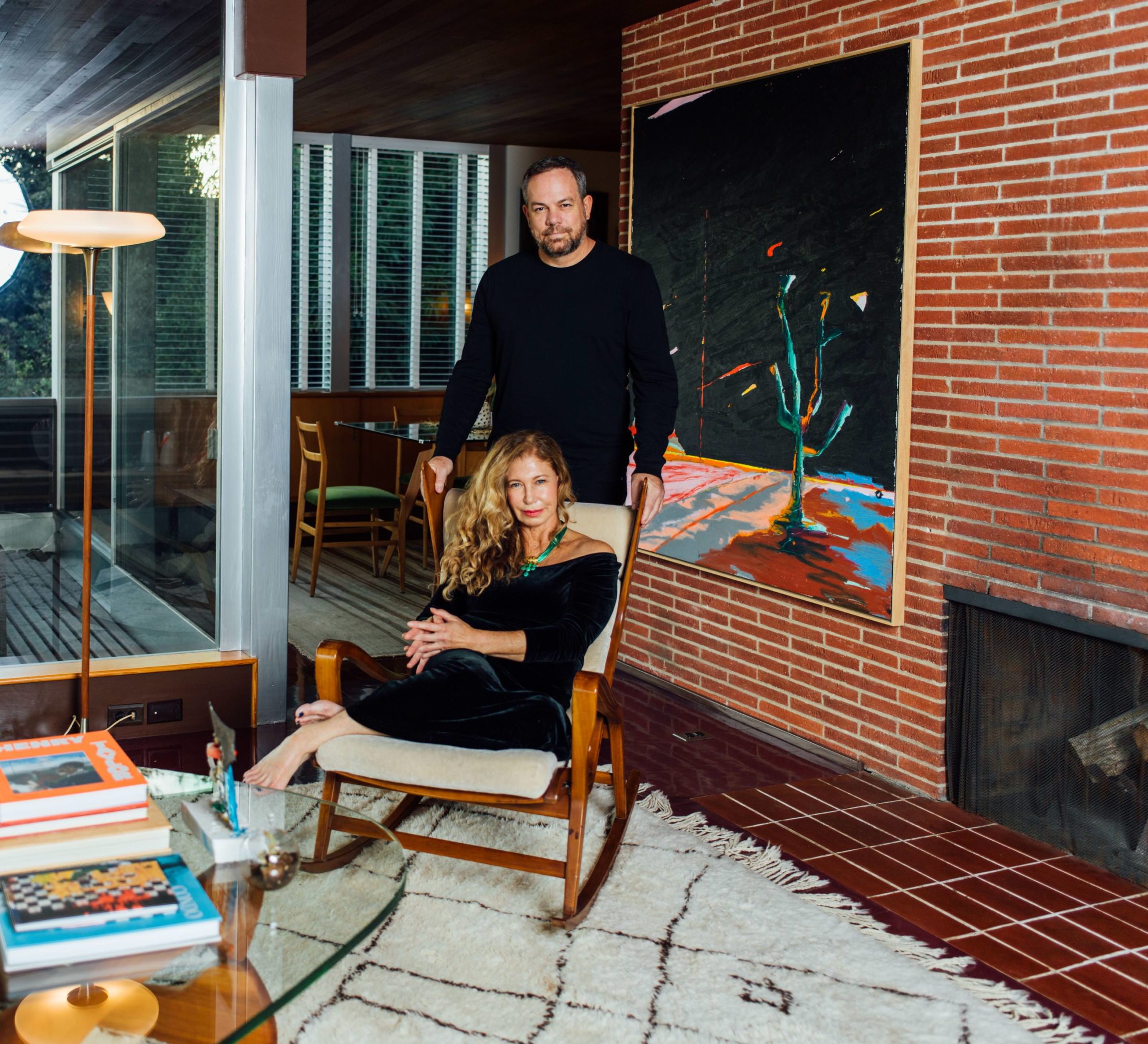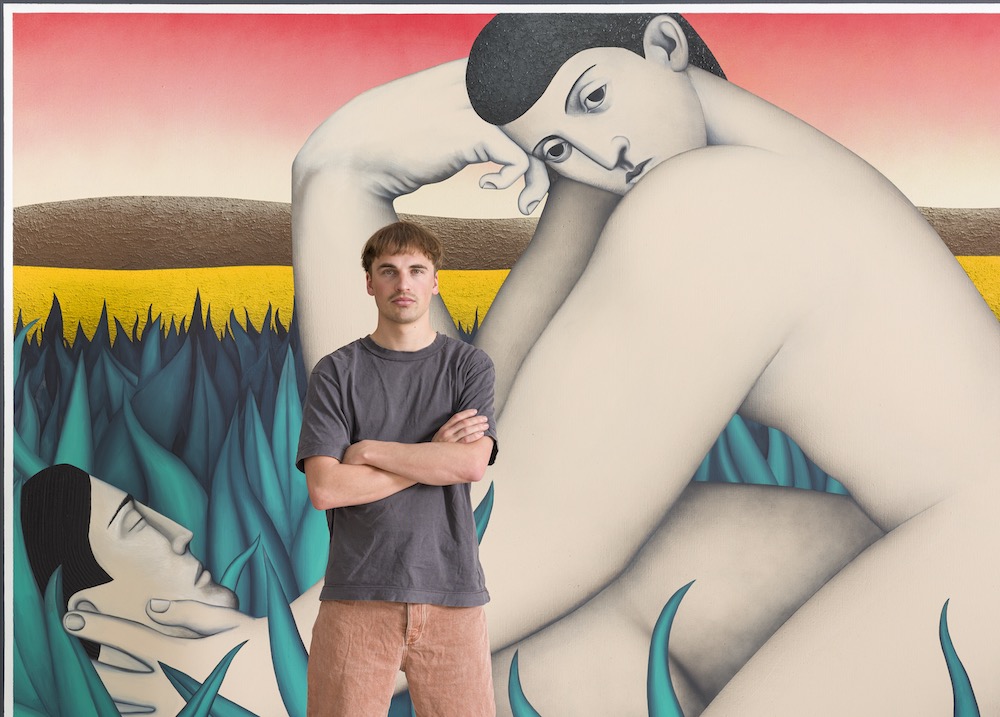By Steve Carter, as reviewed for PATRON Magazine.
It’s been less than a year since Dr. Agustín Arteaga took the reins as the Eugene McDermott Director of the Dallas Museum of Art, but the Mexico City–born and educated Arteaga has taken to the job with a welcome international élan. Opened on March 12 and running through July 16, “México 1900 – 1950: Diego Rivera, Frida Kahlo, José Clemente Orozco, and the Avant-Garde” marks the first DMA exhibition to be organized by Arteaga, an auspicious curatorial beginning for his DMA tenure. The survey show includes painting, sculpture, drawing, and photography from the crème de la crème of 20th century Mexican artists—some well-known stateside, and others less so. In a press release, Arteaga offers, “’México 1900–1950′ showcases not only the greats of Mexican art, but also those who may have been eclipsed on the international level by names like Rivera and Kahlo. The exhibition helps broaden our understanding of what modern Mexican art means, and diversify the artistic narratives attributed to the country.”
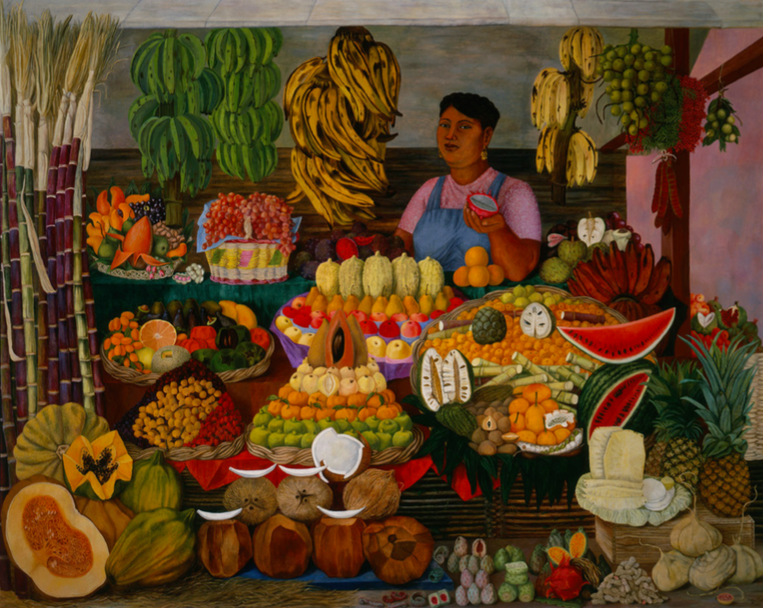
The DMA is the exhibition’s only venue in the U.S.; it opened in Paris at the Grand Palais last October and ran through January, and was a major hit. Unlike the Paris iteration, the DMA exhibition will feature murals by Diego Rivera, Rufino Tamayo, José Clemente Orozco, Miguel Covarrubias, Saturnino Herrán, and Roberto Montenegro—a rare opportunity to view these giants of the genre under one roof. The 200+ works that comprise the show include a large number by female artists: painters Nahui Olin, Leonora Carrington, and Olga Costa, photographer Tina Modotti, multidisciplinary artist Rosa Rolanda, the iconic Frida Kahlo, and others. Besides the muralists, other male artists here are painters Ángel Zárraga, David Alfaro Siqueiros, Manuel Rodriguez Lozano, Gabriel Fernández Ledesma, abstract sculptor Germán Cueto, and many more.
The exhibition is organized thematically, connecting the dots between the international avant-garde, Mexican modernism, the prevalent influence of the Mexican Revolution, and the cross- pollination of Mexican and American artists. Another DMA bonus is that several works of Mexican modernism that are part of the museum’s permanent collection will be on view along with the exhibition. Man (El Hombre), the monumental mural by Rufino Tamayo; Mexican Adam and Eve (Adam y Eve Mexicanos), by Alfredo Ramos Martinez, the “Father of Mexican Modernism”; and Genesis, the Gift of Life (Génesis, el Don de la Vida), an epic glass mosaic mural by Miguel Covarrubias, are among them.
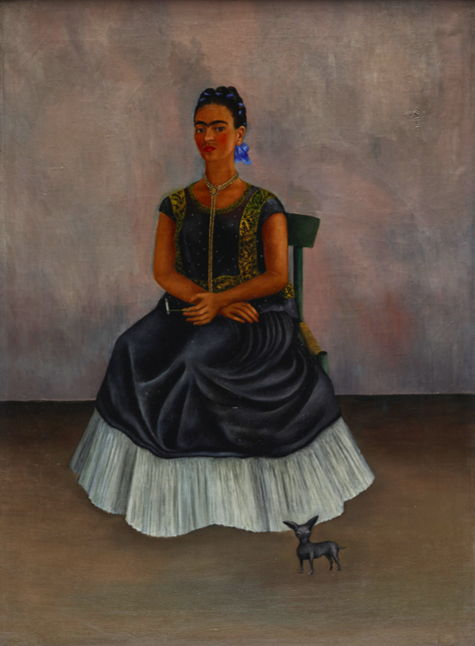 Olga Costa, Fruit-seller (La vendedora de frutas), 1951, oil on canvas, overall: 76.5 x 96.5 in. (195 x 245 cm), Mexico, INBA, collection Museo de Arte Moderno © 2017 Artists Rights Society (ARS), New York / SOMAAP, Mexico City.
Olga Costa, Fruit-seller (La vendedora de frutas), 1951, oil on canvas, overall: 76.5 x 96.5 in. (195 x 245 cm), Mexico, INBA, collection Museo de Arte Moderno © 2017 Artists Rights Society (ARS), New York / SOMAAP, Mexico City.
Another of Miguel Covarrubias’s featured works is Clark Gable vs. Edward, Prince of Wales (gouache and ink on paper, published in Vanity Fair, 1932), a caricature-ish “what-if” narrative of a fanciful encounter—Gable, heart-throb icon of America movies, meeting Edward VIII, notoriously womanizing heir to the British throne. Covarrubias was a renowned painter, illustrator, and caricaturist, and he spent much of his life in the United States.
His palette in Clark Gable vs. Edward, Prince of Wales is strikingly American, but there’s also the undercurrent of Social Realism that infused Mexican art at the time. Indeed, Covarrubias’s works are emblematic of the cross-fertilization of art in Mexico and the United States, a central theme of the show.

Frida Kahlo’s Itzicuintli Dog with Me (Perro Itzicuintli conmigo) is an exhibition highlight, a haunting self- portrait dating to 1938, just before the artist’s solo debut in New York. The largely monochromatic canvas is a case study of the rich possibilities of grey, and both subjects—Kahlo and her tiny pet—address the viewer with patient resignation, regal disdain, and vague curiosity. While not as surrealistically oriented as many of her self-portraits, there’s a compellingly genuine reveal here, a study in solitude, a portrait of the artist as “other.” Another highlight is Diego Rivera’s Juchitán River (Río Juchitán), 1953–1955, a 5 x 30- foot four-panel polyptych that’s a prime example of the muralist’s oeuvre. The work was inspired by Rivera’s trip to the Isthmus of Tehuantepec in the 1920s, and his mythologized depiction of life on the Juchitán is a microcosmic cultural window.
Although he’s best known for his political murals, José Clemente Orozco’s The Soldaderas (Las soldaderas), 1926, is an oil on canvas work with a clear political context. Soldaderas were female aids to male soldiers, essential participants in the Mexican Revolution. Orozco’s gestural, nearly kinetic painting tragically captures the exodus of a band of the fighters. Jorge González Camarena was also well known as a muralist, but his The Bathers (Las Bañistas), 1937, is an easel work. With its Art Deco figuration, dramatic diagonal lines, and “cross” insignias, it casts a strangely prescient martial atmosphere, suggesting wars and rumors of wars, in stark contrast to his subject matter.
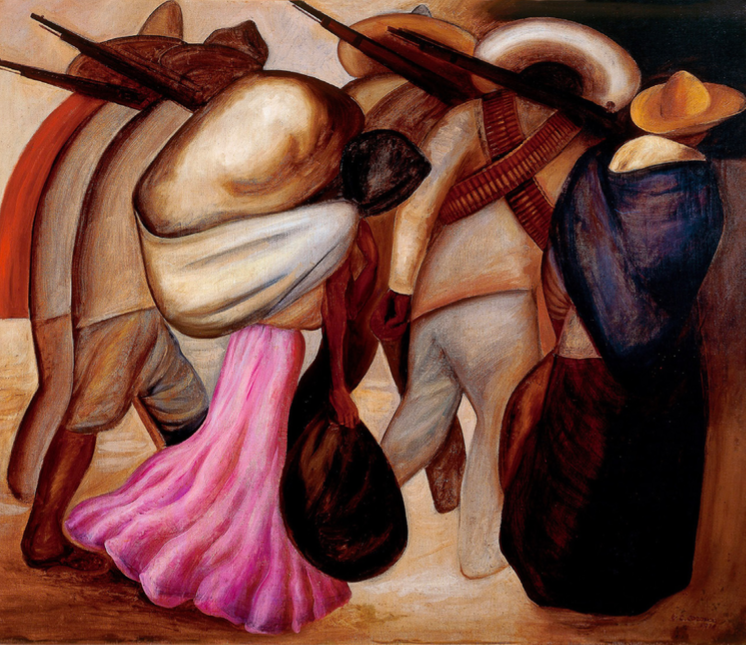 Frida Kahlo, Itzcuintli Dog with Me (Perro Itzcuintli conmigo), c. 1938, oil on canvas, overall: 27 15/16 x 20 15/32 in. (71 x 52 cm), Private Collection © 2017 Banco de México Diego Rivera Frida Kahlo Museums Trust, Mexico, D.F. / Artists Rights Society (ARS), New York.
Frida Kahlo, Itzcuintli Dog with Me (Perro Itzcuintli conmigo), c. 1938, oil on canvas, overall: 27 15/16 x 20 15/32 in. (71 x 52 cm), Private Collection © 2017 Banco de México Diego Rivera Frida Kahlo Museums Trust, Mexico, D.F. / Artists Rights Society (ARS), New York.
Agustín Arteaga’s vision with this exhibition hints at a bright future, and he adds, “Throughout my career I’ve been guided by the belief that art is a critical tool in fostering cross-cultural understanding.”
See more at patronmagazine.com.






